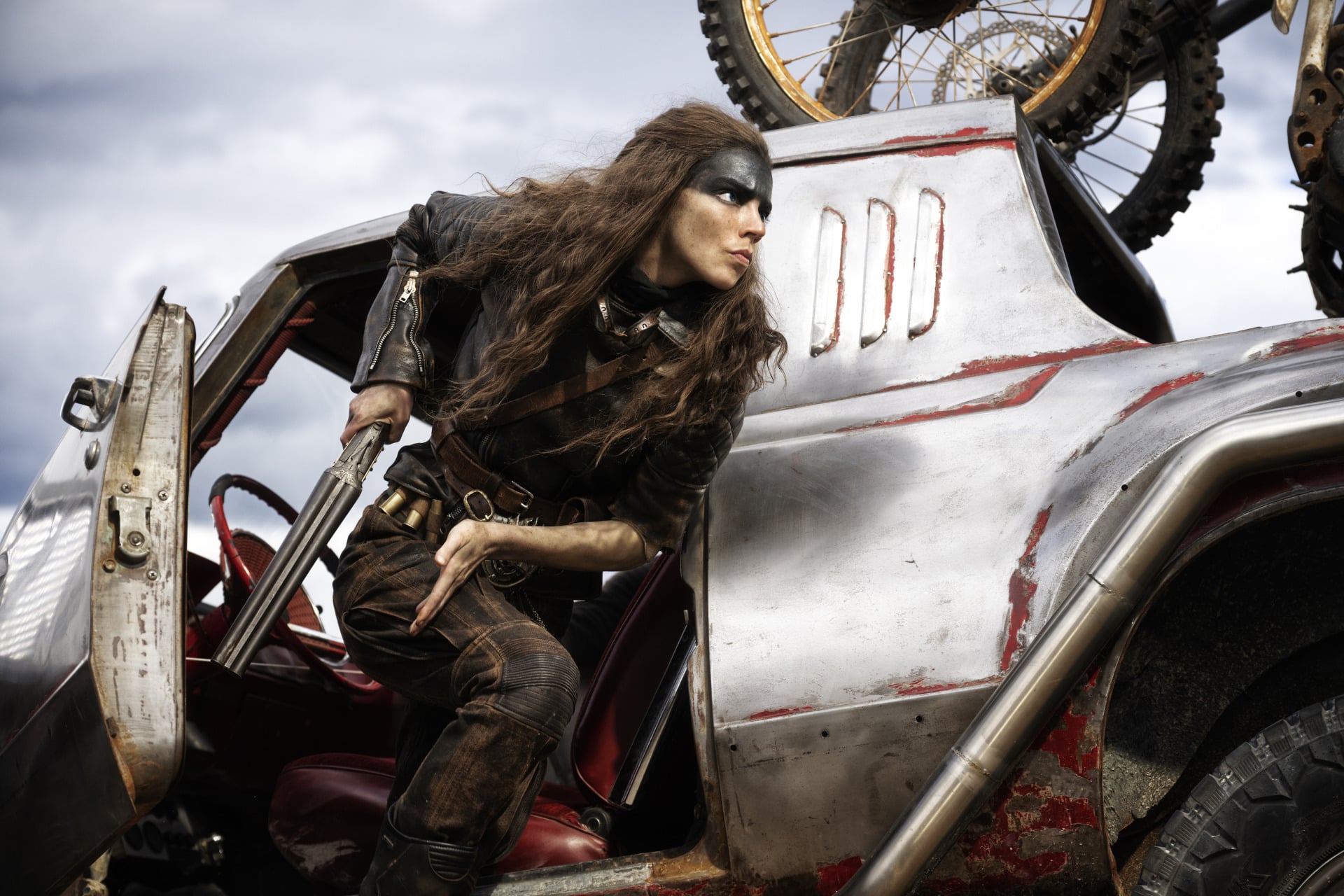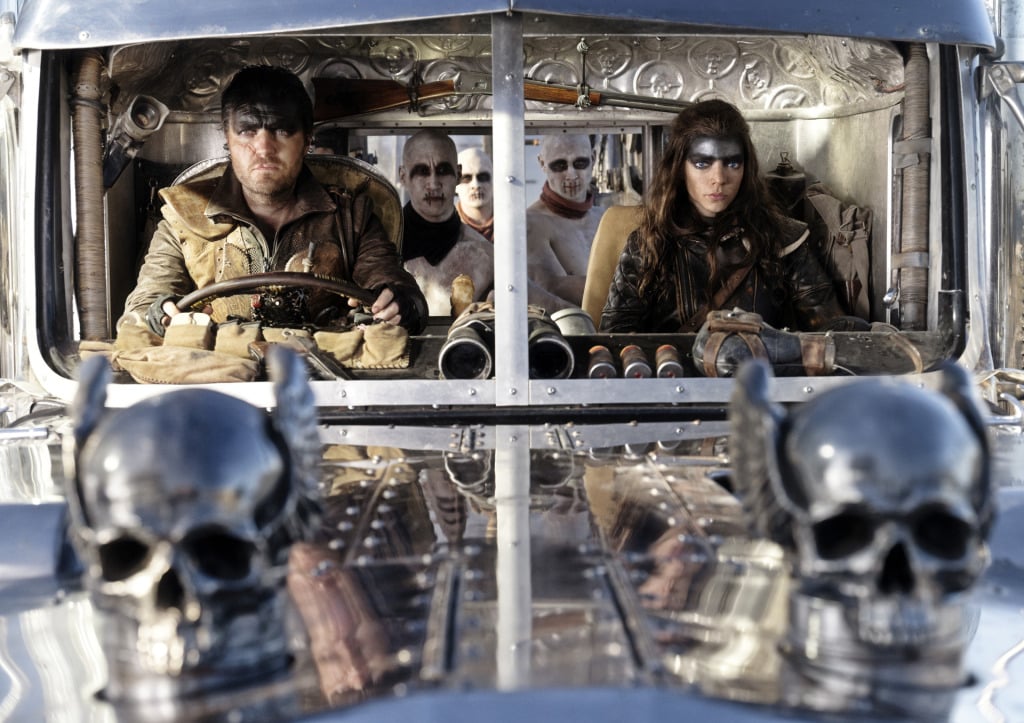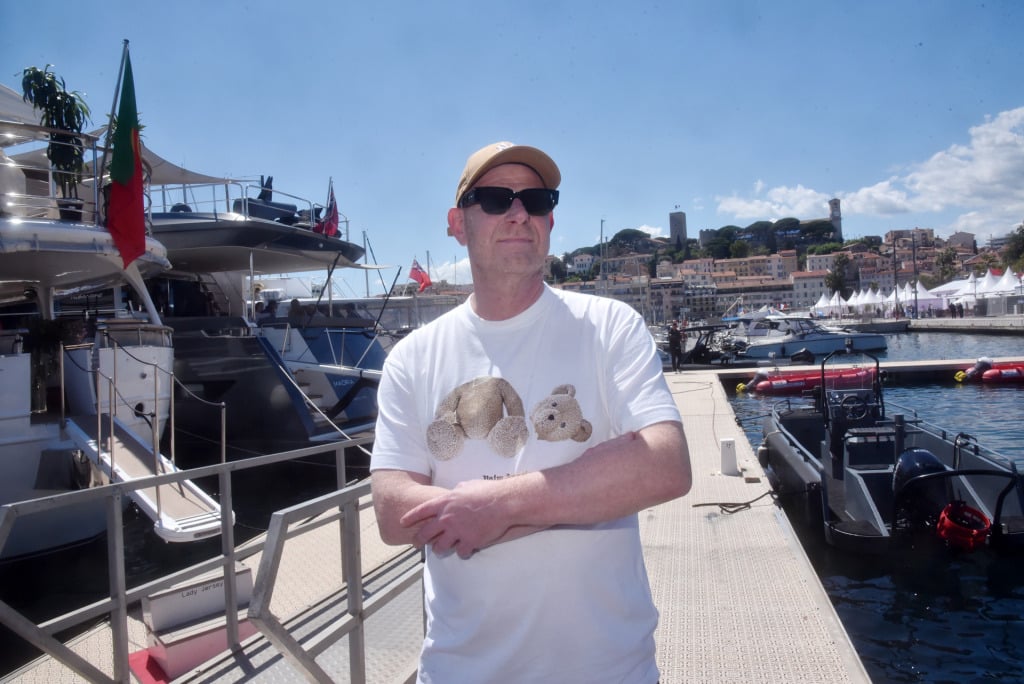
One of the enduring visuals of George Miller’s Mad Max: Fury Road is a man playing a frenzied metal riff on a multi-neck guitar while strapped to a monstrous tower of speakers. The guitar is spouting flames from the top of one of its heads; the man (and, naturally, the speakers) are stationed atop an armoured truck speeding through the Australian outback. It tells you everything you need to know about Fury Road, which is by and large one long nitro-fueled chase sequence set to a rocking, steam-punk score.
Though set in the same post-apocalyptic wasteland that we found Tom Hardy’s titular Max in the previous movie, the score of Fury Road’s long-awaited prequel, Furiosa—which follows how the titular heroine (previously played by Charlize Theron, here by Anya Taylor Joy) becomes the badass desert warrior we first met in Fury Road —is surprisingly a far cry from the maximalist, tribal sound Miller introduced in his 2015 road-movie opus.. Miller and composer Tom Holkeborg had other plans for Furiosa, choosing to peel the layers back with a score that uses the emotions of Furiosa herself as a sonic launchpad, however they might manifest. “Furiosa is a first-person perspective score,” Holkenborg tells me. “We’re seeing the world constantly through her eyes.”
As Furiosa screens in cinemas nationwide, Tom Holkenborg, the composer of both Fury Road and Furiosa, speaks to A Rabbit’s Foot about the future of the Mad Max franchise, working in tandem with the special effects team to create his score, and how he weaved Australia itself into the music.
Luke Georgiades: Can you tell me a bit about your initial process trying to figure out how to make this instalment in the franchise stand apart from the previous film?
Tom Holkenborg: The world is the same—this wasteland world—so those elements are still there: the percussion; the repurposed instruments; the sound design; the synthesiser pulses; the duduk and the didgeridoo; the classic sounding string elements. But the big difference was that Fury Road is a film that takes place in real time. It’s lots of different characters. So the music in Fury Road was more of a third-person perspective, as if I’m sitting next to you in the theatre, watching the spectacle on screen and scoring everything with a massive rock-opera-on-speed score. Whereas Furiosa is a first-person perspective score—we’re seeing the world constantly through her eyes. That has massive implications for the score. We see Furiosa gradually getting to know what the world is like outside of the Green Place. That’s why the music in the Green Place is so ethereal and very much rooted in the Earth. As she gets kidnapped and meets Dementus, her worldview begins to change, and when her mother is brutally slaughtered, that’s the point of no return. She sees what Dementus is capable of. A six year-old girl seeing her mother get brutally murdered is not going to hear a beautiful sad string symphony in her head—what she’s going to feel is her heart pumping in her chest in sheer panic. From that point forward, everything that we see in the wasteland is through her eyes and emotions. It’s the boiling point, and that’s when the music becomes really important.
Another great example is the massive action scene where Praetorian Jack and Furiosa get separated by all the gunfire. The reason why we don’t hear loud, action movie music is because she has a bond with Jack. She is willing to sacrifice herself for him and vice versa. You don’t score emotions like that with big action music. You score it minimally—that’s the pure contact the two have with each other. That’s the difference between the two films.

LG: Did that realisation come some way during the process of scoring or was it the incentive from the beginning?
TH: The nature of the score is always based on discussions between the composer and the director, and when we did Fury Road together, I was already aware that the script had been written for Furiosa. They made changes to the script, but the bulk of the story was already there. So we knew that everything we were going to use in Fury Road would have implications for Furiosa. We’d have to set everything up in the right way, and that includes the story, the way it was filmed, the way it was acted, and also the music.
LG: It’s interesting that even back then, when you were making Fury Road, you were considering how the score might compliment the next film.
TH: You never know when a sequel is going to be made. You talk about it, but you never know. When I did Godzilla vs Kong in 2020, we never knew if there would be a sequel to that. But if it does come, you have to be ready with an idea of how you’re going to develop the theme for Kong or the theme for Godzilla. Every theme you come up with should have implications on everything that comes after.

LG: Are you and George now thinking about how the score in Furiosa or Fury Road might have implications for a third film in this era of the franchise?
TH: I can’t share with details, but I’ll tell you this: when we worked on Fury Road, we knew the choices we made for Fury Road would have implications for the movie that would come after (a potential sequel to Fury Road) and it would have implications for what would come earlier (what would become Furiosa). What I didn’t know was which he wanted to do first, or if he wanted to do two prequels, or two sequels. But I do know that George has a timeline in his head that spans 50+ years in either direction. He knows what the Wasteland looks like, including all the characters that we’ve come to know. I’m just not sure which story he wants to develop further right now.
[W]e knew that everything we were going to use in Fury Road would have implications for Furiosa. We’d have to set everything up in the right way, and that includes the story, the way it was filmed, the way it was acted, and also the music.
LG: You must be quite used to working on big budget blockbuster movies now. Tell me a little bit about how your creative dynamic is with George and what makes it unique?
TH: Every movie property is different and calls for a different approach. Likewise, every director is completely unique in how they approach the process. I’ve been lucky enough to work with James Cameron, Peter Jackson. Zack Snyder, and George Miller. George and I quickly became close friends after Fury Road, and we have lots of conversations between the movies and during. The level of detail and foreseeing what his film is going to eventually look like is to a level I’ve never seen before. It’s mind boggling. He has such a complete picture of what he wants to achieve visually, what he wants to achieve with the set and costume design, what he wants to achieve with special effects, with the sound effects, how the engines need to sound, how the roar of the crowd needs to sound, the voice of Immortan. It’s so detailed, what he hears in his head. Musically, he really lets me be me and do what I think is best with the movie. And the moment I present it, that’s when he gets very detailed. He lets me present the painting, then he’ll say “oh, what a lovely landscape you have here. Maybe you could add a little cloud right in front of the sun, and maybe an extra tree over here.” He always works off what I give to him.
LG: Do you spend much time on set?
TH: Usually I don’t. What was unique about this process though, was that I was involved in the very start of the initial sound process up until what you heard in the theatre. I was doing the re-recording engineering with Rob Mackenzie, I was one of the mixers. To space the music throughout the theatre and see the impact it had. That was a first for me from a composer standpoint, and it was an amazing experience. The give and take between sound effects and music was very important in this movie.
LG: Australia’s obviously a huge element of these Mad Max movies. Is that something you have to take into consideration when making the movies?
TH: Fury Road was a little more ambiguous whether it was actually Australia or not, except for the accents of the actors, especially the early films. But in this movie George made a point of specifying that the Mad Max saga takes place in Australia. We see the Earth spinning around, we zoom in on the continent of Australia, and you see the Green Place. In Fury Road, when Furiosa is talking about the Green Place, there’s a flurry of Duduk and Didgeridoo. So we knew if we were going to do that then, it would have major implications for Furiosa, which is even more deeply tied to the Green Place. She’s constantly being reminded of it, she’s constantly trying to return to it, she’s constantly trying to protect this utopia. So the instruments to represent that are the duduk and the didgeridoo. The duduk sounds very mysterious, and we worked with this incredible player Pedro Eustache, who is a master of the duduk. The didgeridoo is so deeply rooted in the original indigenous culture of Australia. It’s one of the oldest instruments to ever be built by humans—probably about a few thousand years old. We worked with William Barton, who is no regular didgeridoo player. He’s a spiritual force in the aboriginal community, and takes part in spiritual ceremonies before he even starts playing, thanking his elder fathers for their wisdom. It was incredible to have a glimpse into a culture that is completely not my own. That’s been my luxury as a film composer, to explore cultural information that dates back thousands of years.





